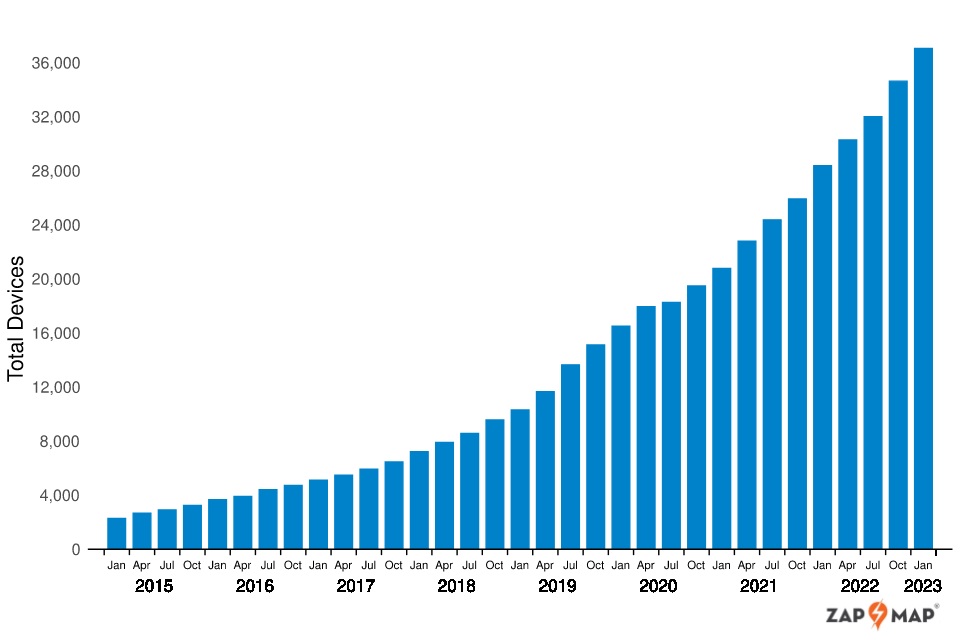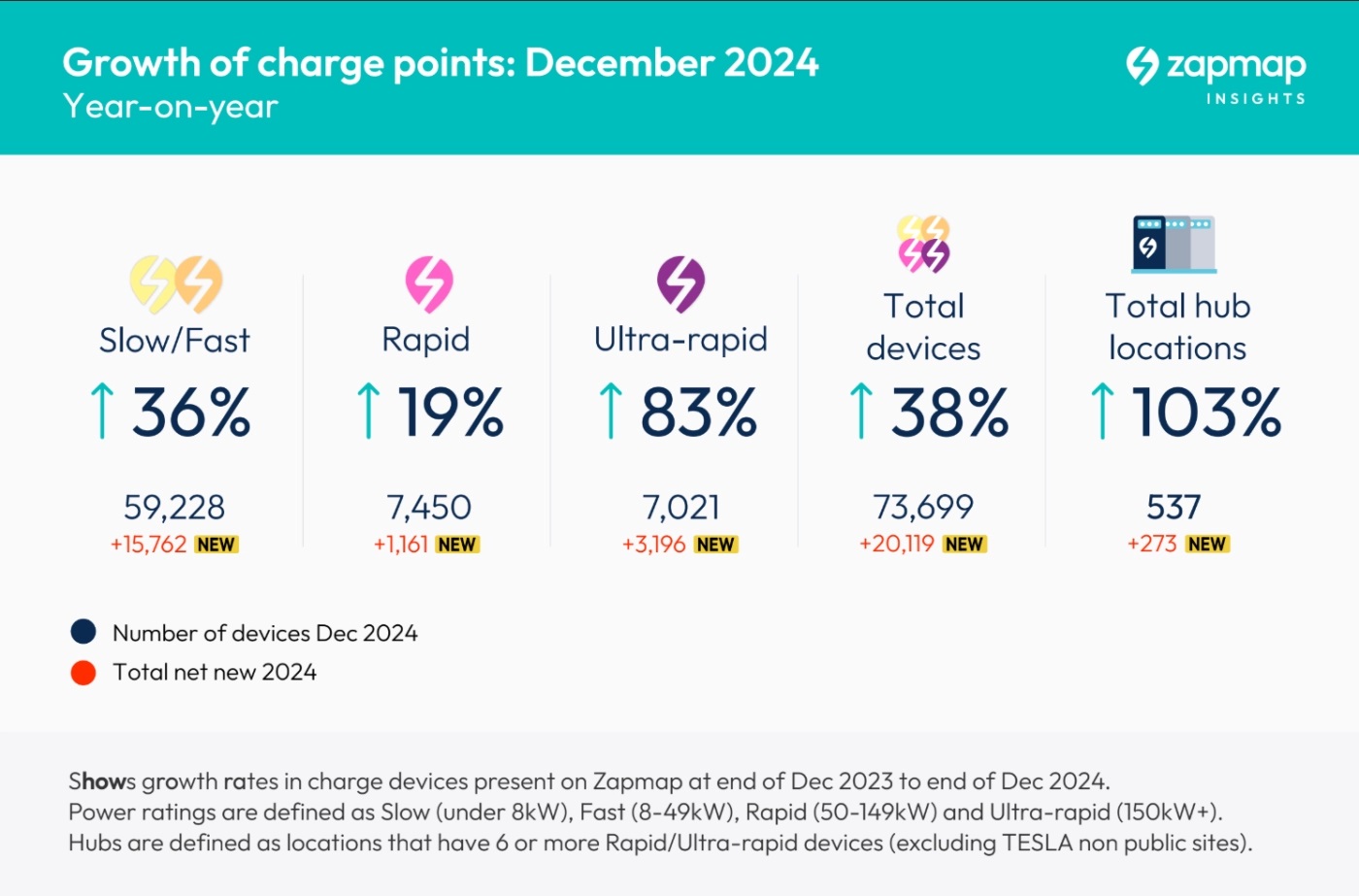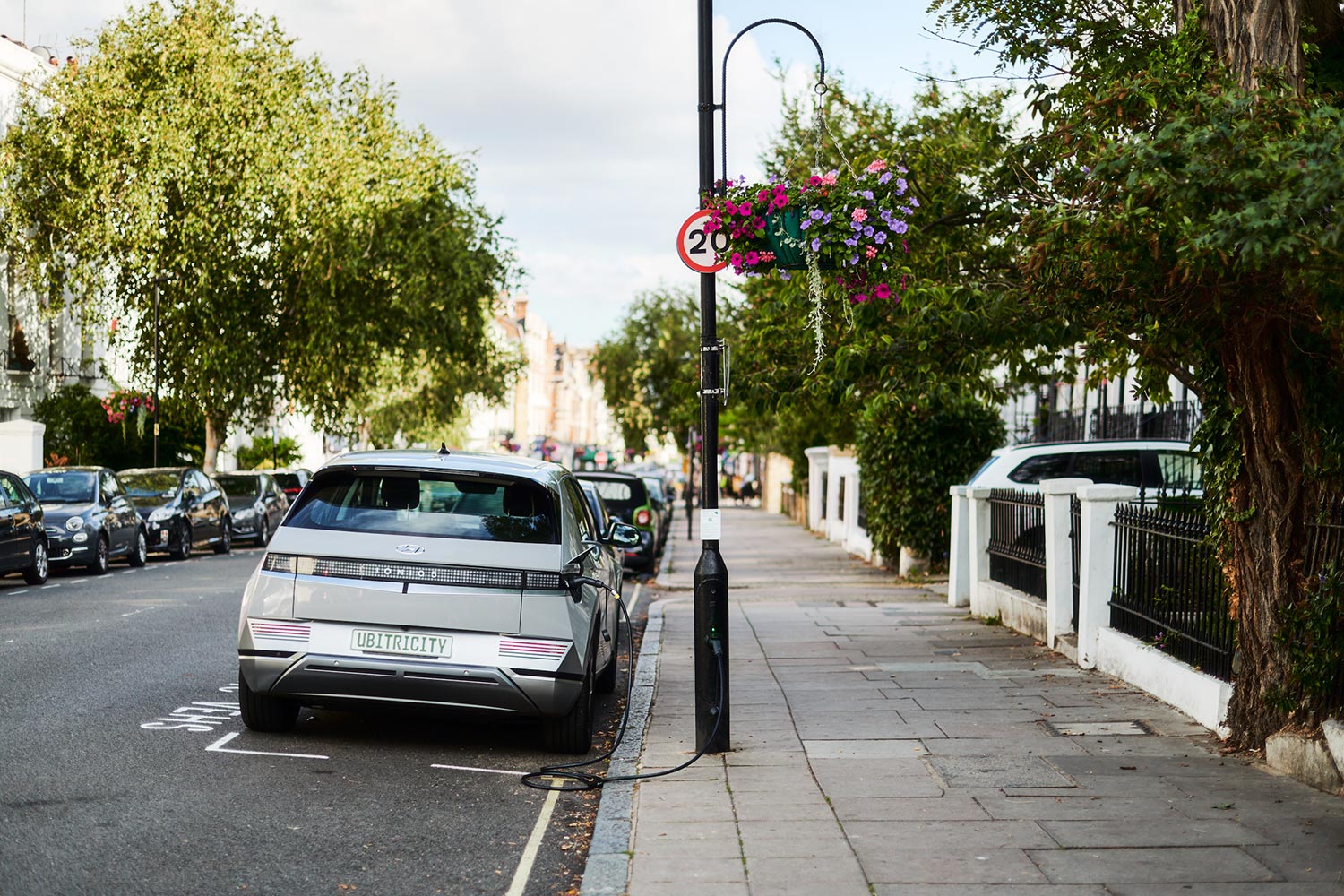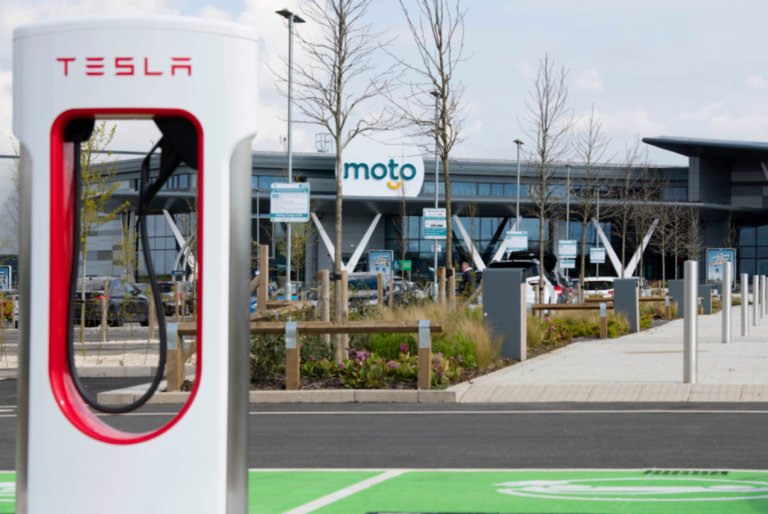
In total there were 37,055 public EV charging devices installed in the country as of 1 January 2023, an increase of 2,418 (7%) in the three-month-period from 1 October 2022.
At the current rate of increase there would only be around 100,000 public EV chargers in the UK by 2030, well short of the government's target of 300,000. To meet this figure at least 35,000 new chargers would need to be installed each year through to 2030.
Of the total public charging devices installed last year, 6,887 were rated 'rapid' devices or above, representing 19% of all charging devices, while 21,255 were rated 'fast' chargers and this represents 57% of all charging devices. Rapid charging or above devices increased by 492 from 1 October, a rise of 8%.
18,321 were designated as 'destination' chargers, which represents 49% of all charging devices. 11,996 were designated as 'on street' chargers, accounting for 32% of all charging devices.
Proportionately, the largest increase in installations was within the ultra-rapid device category, which increased by 10% in the last quarter (albeit from a lower base than other categories), accounting for 211 charging devices. Ultra-rapid charging devices are still the smallest overall category with 2,295 devices.
The smallest proportionate increase in charging devices installations was in the slow charging devices categories, with an increase of 5% or 417 charging devices. Fast charging devices are still the most common category to be publicly installed, growing by 8% or 1,509 devices.
The most common location category for charging devices is 'destination' with 18,321 charging devices or approximately half of all publicly available charging devices. 'On street' charging devices is the second largest category accounting for 32% of charging devices or 11,996.
ChargePoint location categories are defined based on both the physical/type of facility they are located in and who can access this but also the type of charging service they are designed to deliver: On Street Charging devices located on residential streets only; En-route Charging devices located for charging to continue a journey. Located in motorway service areas, service stations, electric forecourts and ferry terminals. Additionally Rapid or Ultra Rapid devices in hotels, restaurants and attractions; Destination Charging devices located at the end of an EV journey or where a driver may typically stop for an extended period of time. Consists of both Rapid or Ultra-Rapid and Fast or Slow devices located in retail car parks, car parks, leisure, education areas and transport (except ferries); in addition Fast or Slow devices located at hotels and restaurants; Other Charging devices which are semi-public with some level of access restrictions such as workplace car parks and dealership forecourts.
Regional distribution
There is an uneven geographical distribution of charging devices within the UK. Some UK local authorities have bid for UK Government funding for charging devices, and others have not. Most of the provision of this infrastructure has been market-led, with individual charging networks and other businesses (such as hotels) choosing where to install devices.
Public devices per 100,000 population: North East 47, North West 31, Yorkshire and Humber 36, East Midlands 39, West Midlands 47, East England 37, London 131, South East 52, South West 44, Wales 47, Scotland 69, Northern Ireland 19.
London and Scotland had the highest level of charging provision per 100,000 of population, with 131 and 69 devices per 100,000 respectively. In comparison, the average provision in the UK was 55 per 100,000.
Northern Ireland had the lowest level of charging device provision in the UK, with 19 devices per 100,000, followed by the North West and Yorkshire and the Humber with 31 and 36 devices per 100,000 respectively.
Scotland had the highest rate of rapid device provision of 17.3 rapid or quicker devices per 100,000, whilst the average provision in the UK was 10.3 per 100,000. Rapid or quicker device provision was lowest for Northern Ireland with 1.4 rapid or quicker devices per 100,000. North West and East of England were the second and third lowest regions with 8.3 and 8.9 rapid or quicker devices per 100,000 respectively.
All regions across the UK saw an increase in total charging devices between October and December 2022. Wales had the greatest increase at 17.3%, whilst East Midlands had the smallest increase at 3.3%. London had the greatest increase in absolute number of devices at 493 devices, closely followed by Scotland at 486 devices.
The DfT says the number of available devices can fluctuate for a range of reasons. Increases likely reflect the installation of new devices, whilst owners and operators can choose to temporarily or permanently decommission or replace devices. Charging devices can also be unavailable due to faults, maintenance or other restrictions in the area where they are located, though data on the status of charging devices is not held by Department for Transport.
Rapid charging or above devices have increased in every region in the UK. The smallest percentage increase in the number of rapid charging or above devices was South East at 3.3%. Wales had the largest percentage increase in rapid charging or above devices at 26.9%, corresponding to an increase of 60 rapid charging or above devices.
The DfT comments: "Charging devices have largely been funded by private sector investment, however a number of the devices have been Government funded via a number of grant schemes operated by the Office for Zero Emission Vehicles (OZEV). OZEV also provides grant funding for private domestic charging and workplace charging devices, which are included in the quarterly electric vehicle charging device grant scheme statistics publication. Private domestic and workplace charging devices are not included within these statistics, as they are not necessarily available to the general public."
The DfT adds that the charging device location data is sourced from the electric vehicle charging platform Zap-Map and represents devices reported as operational at midnight, 1 January 2023. Zap-Map report they cover 95% of publicly accessible devices. The total count of charging devices in the UK (when accounting for privately installed devices) will therefore be higher and we have no way of assessing whether data coverage is better in some geographical areas than others.











